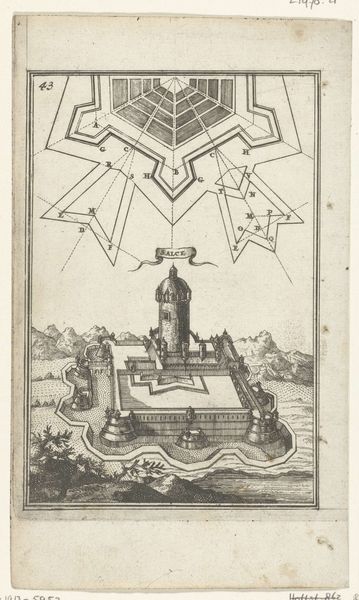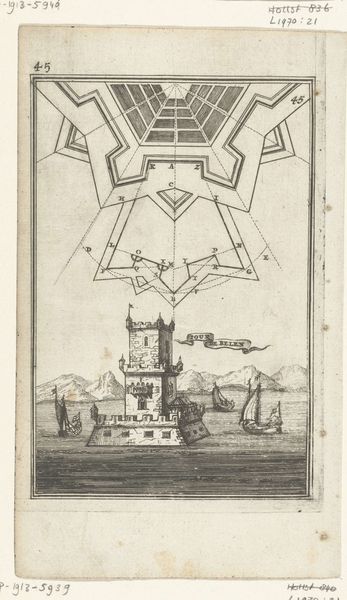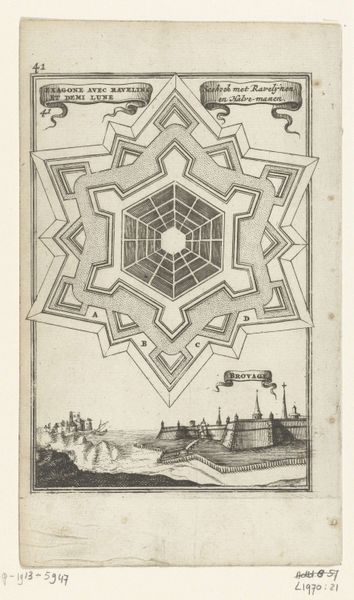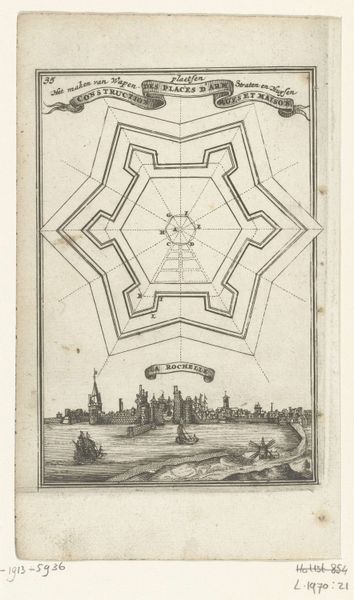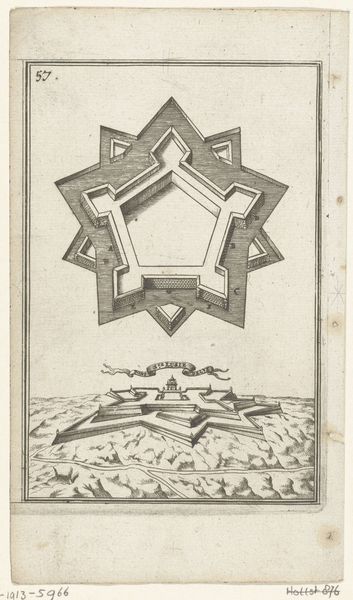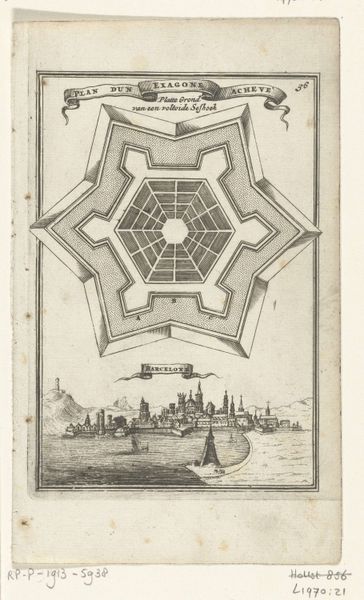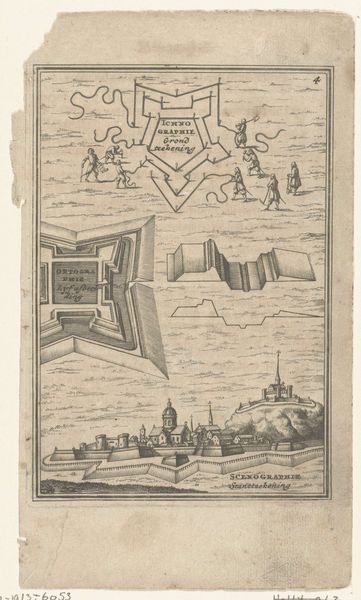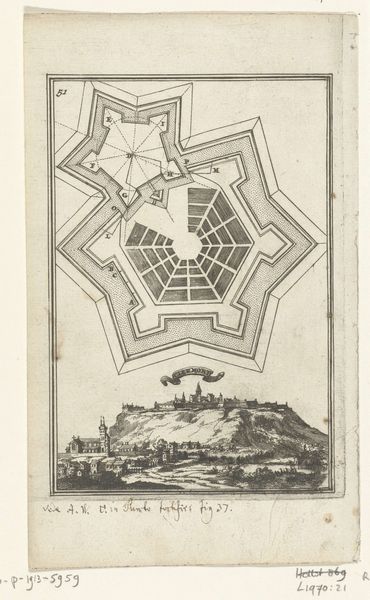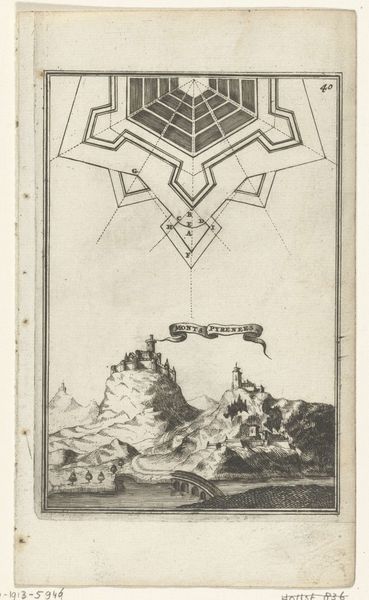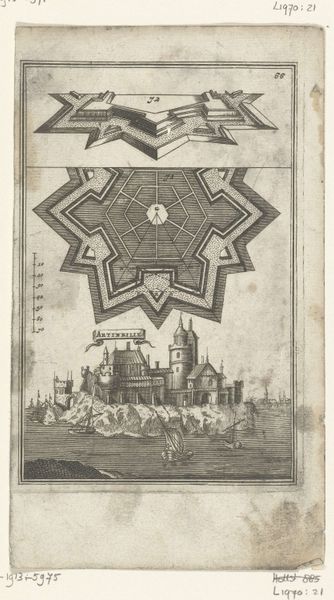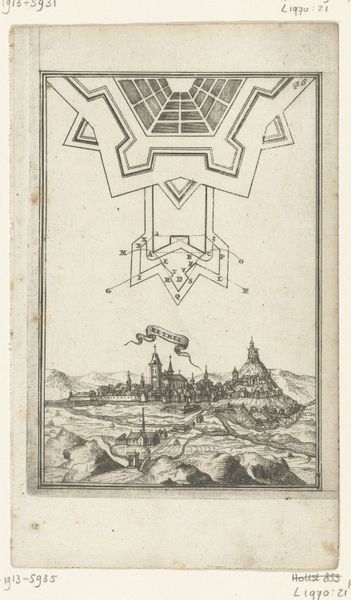
Illustratie voor 'Den Arbeid van Mars' van Allain Manesson Mallet 1672
0:00
0:00
romeyndehooghe
Rijksmuseum
print, engraving, architecture
#
baroque
# print
#
old engraving style
#
landscape
#
cityscape
#
engraving
#
architecture
Dimensions: height 186 mm, width 110 mm
Copyright: Rijks Museum: Open Domain
Curator: Today we're looking at an engraving from 1672 attributed to Romeyn de Hooghe titled "Illustratie voor 'Den Arbeid van Mars' van Allain Manesson Mallet" currently held at the Rijksmuseum. Editor: Immediately I’m struck by the stark contrast between the geometrical precision above and the bustling cityscape below. It creates an interesting tension, doesn’t it? Curator: Indeed. Let's delve into that precision. The upper section is a fortress plan, typical of military treatises of the period, showcasing the cutting-edge defensive architecture meant to withstand cannon fire. Its rendering speaks volumes about the engraver's skill. The print would have served a didactic purpose in its original context. Editor: The fortress plan is like an abstract symbol of power, then? Whereas, if we focus on the detailed city scene, we see ordinary life unfolding. There’s a large boat being worked upon, people bustling about... How do you interpret the meaning behind the cityscape elements specifically? Curator: I believe that the boat, and architecture signify international trade, demonstrating that these states and organizations engaged with global economies as fundamental part of everyday existence. These economic interests were inevitably linked to geopolitical powers. Editor: The inclusion of the inscription 'George de Venise' adds a layer. Venice was of course a major trade hub. Did de Hooghe perhaps subtly imply some vulnerability in representing Venice so openly linked to Mars, the god of war? Curator: The strategic element in play comes down to understanding this print was part of a series for a treatise. One could then assume the fortress structure on top and boat and Venice structure signify specific strategic planning to conquer it or at least the importance of its access, linking Venice through allegory and association to defense. It's an intricate message. Editor: It makes me wonder, too, about de Hooghe’s own stance on this military industrial complex of the time. Was he celebrating progress or subtly critiquing the era's endless power struggles? Curator: A fascinating question. What appears initially as a straightforward illustration unveils a complex reflection of the material interests driving conflict during this period. Editor: So much for a simple book illustration. Curator: Precisely. And with that we invite you to look a bit deeper into everything you think you know, especially considering symbols. Editor: It’s all too easy to take imagery for granted in our media-saturated world. Reflect, and you might find worlds nested inside what seems ordinary.
Comments
No comments
Be the first to comment and join the conversation on the ultimate creative platform.

